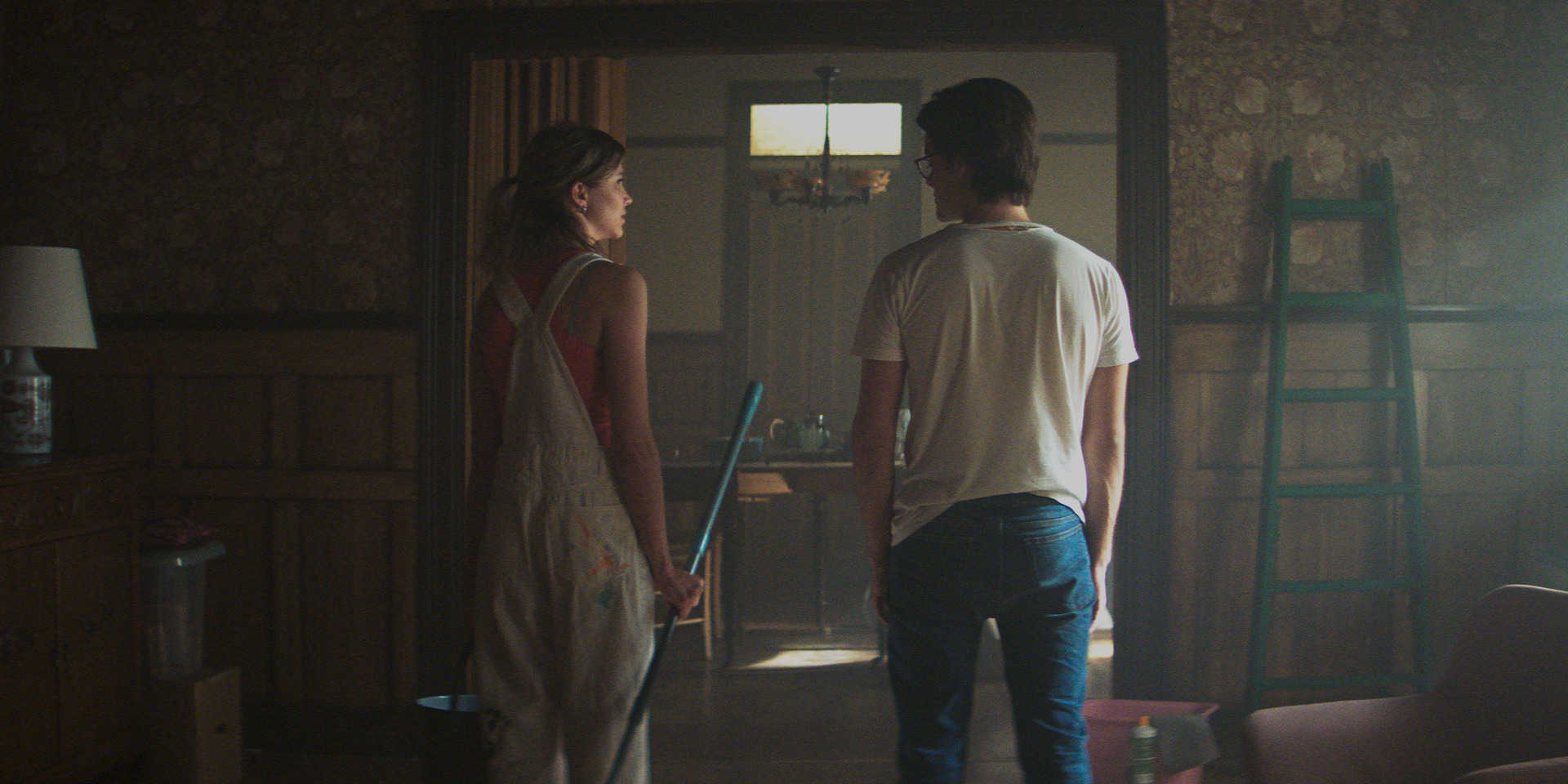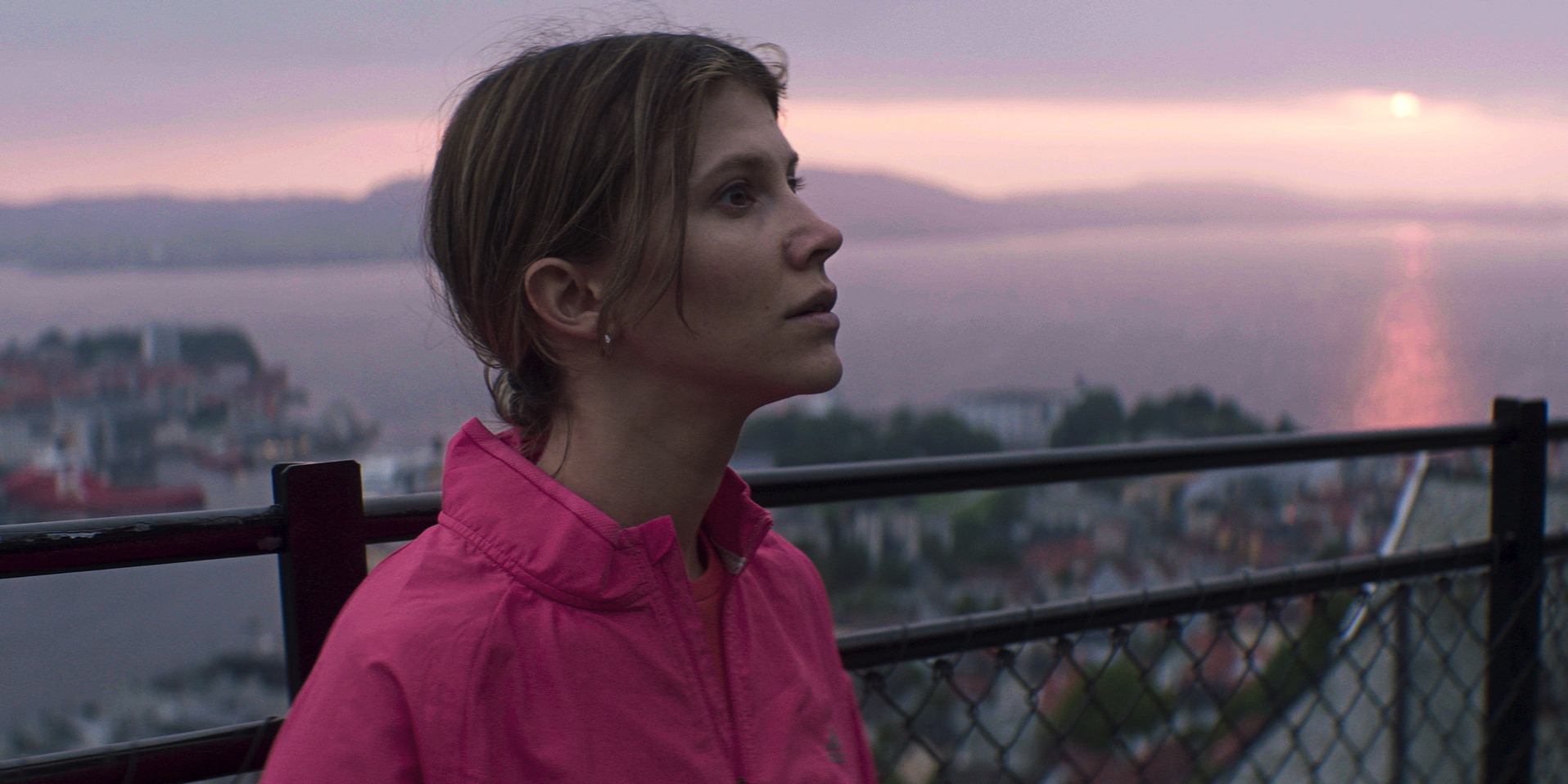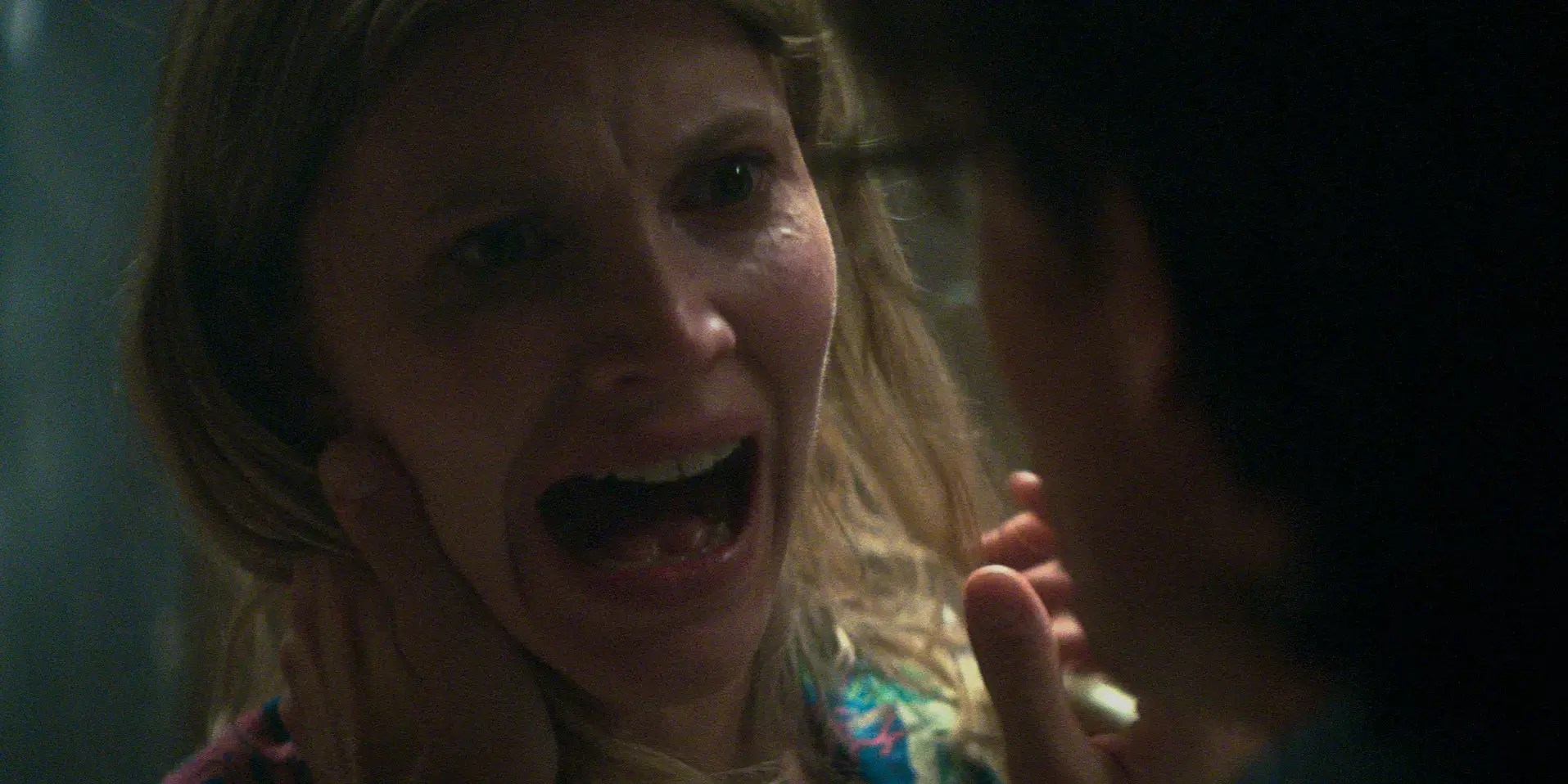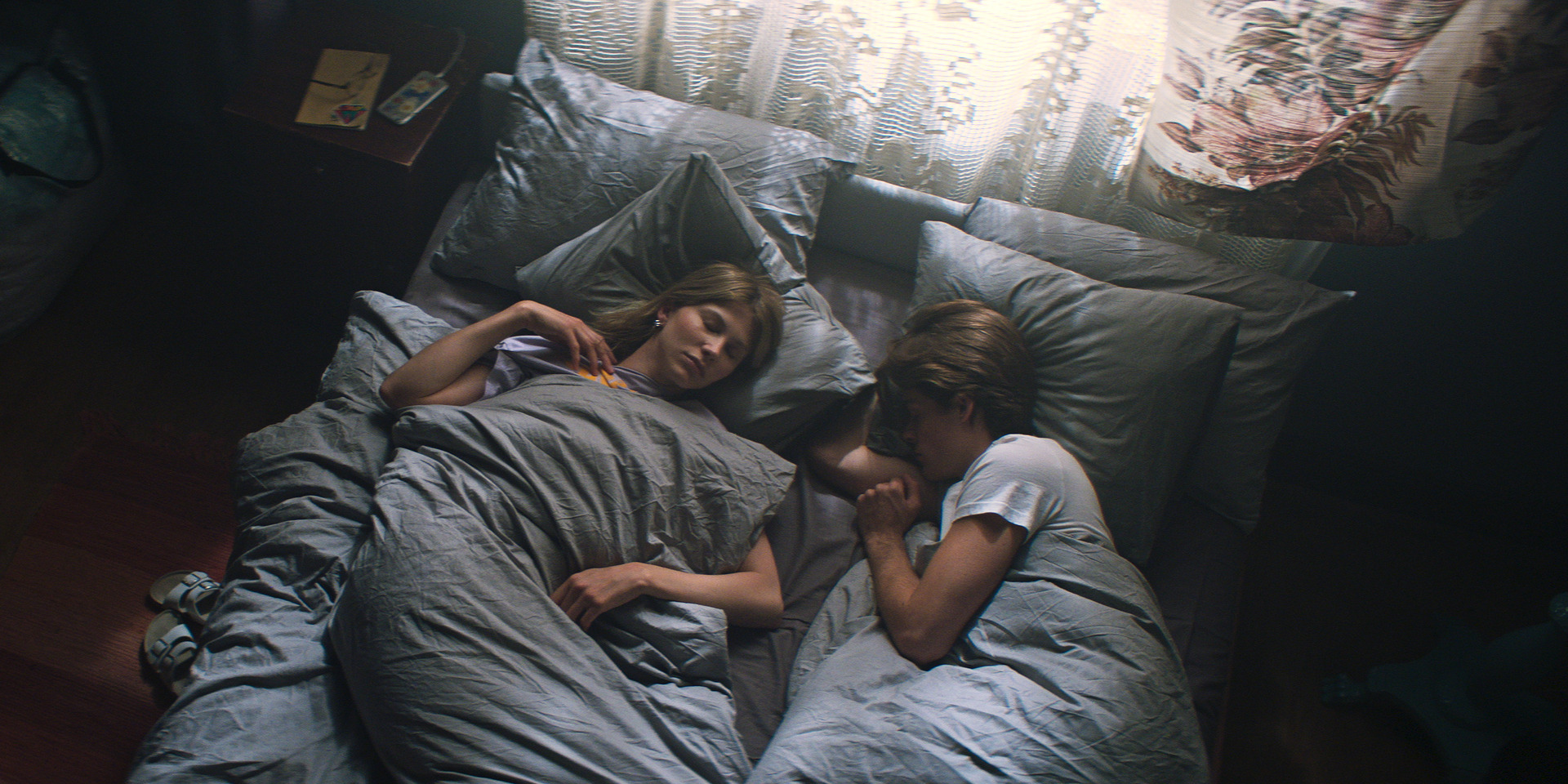‘Nightmare,’ originally titled ‘Marerittet,’ is a thought-provoking horror film of 2023 helmed by Norwegian filmmaker Kjersti Helen Rasmussen. ‘Nightmare’ boasts a constellation of talent, including Eli Harbo, Dennis Storhi, Herman Tmmeraas, Preben Hodneland, Gine Therese Grnner, and a host of other stars. In the heart of this chilling tale lies Mona (Eli Harbo), stepping into a fresh chapter of her life alongside her boyfriend, Robby (Herman Tømmeraas), as they nestle into a new abode. Unfortunately, The promise of a thrilling adventure soon twists into a harrowing odyssey.
Merely days into their newfound sanctuary, Mona becomes ensnared in sleep paralysis and a nightmarish descent. Mona’s visions reveal a demonic force hell-bent on hijacking her very being and breaching the mortal plane. Mona battles desperately for freedom, yet the evil force takes a toll on her psyche, blurring the lines of reality and plunging her into a maelstrom of terror. Given its realistic exploration of weighty subjects, such as sleep paralysis and sexual assault, one might wonder if ‘Nightmare’ is based on real events. Here are the facts.
Nightmare is an Original Screenplay
The movie hails from the brilliant mind of the writer-director Kjersti Helen Rasmussen, who has garnered critical acclaim for movies like ‘Tunnel,’ ‘Voyager,’ ‘Villmark 2,’ and more. In this spine-chilling tale, the audience is taken on a journey that explores the consequences of failing to distinguish dreams from reality. The storyline, while not based on a true story, ventures into the eerie and unsettling territory of the human mind and its capacity to deceive and terrify.

Rasmussen skillfully employs the cinematic lens to portray the haunting repercussions of this confusion, immersing the viewers in a world where the line between what is imagined and what is genuine becomes distressingly thin. The movie also adds a supernatural element by exploring the concept of “Mare,” a Nordic demon from folklore. Mare is a malevolent entity known to haunt sleepers by sitting on their chests, inducing hallucinations and temporary paralysis. In ‘Nightmare,’ the Mare becomes a central antagonist, terrorizing the protagonist, Mona.
When questioned about her choices to include “Mare,” Rasmussen stated that she wanted to explore a woman’s deep-seated fear of sexual assault by using the concept of a demon who has sexual relationships with his victim. Rasmussen continued that by introducing “Mare,” the film taps into a fundamental fear that women have had throughout history: the fear of sexual assault.
Rasmussen also connects this ancient belief to modern psychoanalysis, highlighting how the experience of being abused and feeling an involuntary attachment is similar to the ancient concept of the demon. The mention of sleep paralysis and how it can be perceived as a similar experience for men provides context to the gendered nature of this fear. Overall, the movie underscores the enduring and pervasive fear of sexual assault in various cultures, stemming from ancient folklore to contemporary anxieties.
The soundscore accompanying the Mare’s appearances in ‘Nightmare’ perfectly intensifies the horror and suspense within the movie. The auditory elements, carefully designed and orchestrated, heighten the overall cinematic experience and evoke a visceral response from the audience. When the Mare takes the stage, the soundscore likely employs a combination of eerie, discordant tones, deep reverberations, unsettling whispers, and the sound of the fly.

When asked about the auditory choices during an interview, writer-director Rasmussen stated- “This is the brilliant work of my sound designer. Before we shot the film, he read the script and talked about insects, but we didn’t talk about specific insects while working in the studio. For him and me, it was the specific traits of the flies circling around dead people and attracted to death.”
Rasmussen continued, “It was like giving a specific sound that can trigger something, in low frequency and high frequency, and there’s this airy feeling anyway. Still, it also has an association with death for me. So it’s like giving the demon a sound that we could use to trick. We did a lot of base on the frequency of the flies; the audience may not recognize it as the fly, but it is the fly. It’s just sometimes very low.”
In ‘Nightmare,’ as in her other films, director Kjersti Helen Rasmussen places a significant spotlight on the female lead, Mona, crafting a compelling character arc that showcases the strength and the ability to confront forces way beyond human comprehension. Rasmussen’s narrative ingeniously portrays Mona’s evolution, underlining her journey from a vulnerable and fragile woman reliant on external support to a formidable force standing up against a demonic entity seeking to exploit her. Rasmussen’s spin on Mona is like a rollercoaster of defying stereotypes in the horror realm. Mona flips the script, showing us that women aren’t just damsels in distress. They’re the multi-dimensional superheroes of their own spooky story.
Herman Tømmeraas, the talented actor portraying both Robby, Mona’s boyfriend, and the demonic entity in ‘Nightmare,’ also opened up about his preparation and approach to these dual roles. In the interview, Tømmeraas dwelled on the contrasting dynamics of both his roles and the challenges associated with each. To portray Robby, the emotional and relatable boyfriend character, Tømmeraas tried to put himself in the shoes of a person navigating life choices and aspirations.

Roby grapples with defining his path and making important decisions, presenting a distinct challenge in understanding and portraying this internal struggle authentically. Conversely, in portraying the demonic entity, the focus shifts to channeling a menacing and reticent presence. Tømmeraas emphasizes that the demon’s power lies in its ominous aura and non-verbal communication. Thus, Tømmeraas had to convey the character’s malevolence primarily through facial expressions and body language.
In a nutshell, ‘Nightmare’ is not rooted in reality, but it does tackle serious topics like sexual assault, supernatural menace, fear, dreams, reality, and more. ‘Nightmare’ beckons the audience to ponder the fragility of our perceptions and the potential for our deepest fears and anxieties to infiltrate our waking lives. It is a masterful depiction of psychological horror, demonstrating the unsettling notion that the mind can be a playground for the macabre and that reality may not always offer the sanctuary we seek.
Read More: Best Horror Movies of All Time


You must be logged in to post a comment.